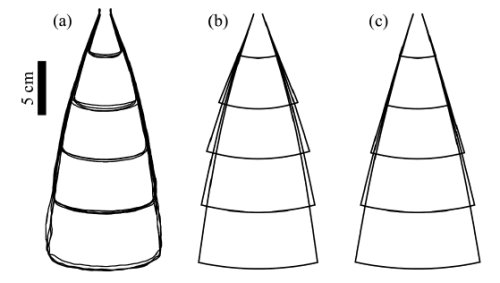
The shape of a real ponytail at various lengths is given by “a”. Calculated shapes by “b” and “c”, where “c” includes a term for frizziness. (Courtesy: American Physical Society)
By Hamish Johnston
Here is some research that is truly on the fringe – or a “big bangs theory” for our readers in North America.
Physicists in the UK have published a paper in Physical Review Letters entitled “Shape of a ponytail and the statistical physics of hair fiber bundles”.
Written by Raymond Goldstein of the University of Cambridge, Robin Ball of the University of Warwick and Patrick Warren of the shampoo-maker Unilever, the article offers an “equation of state for the human ponytail”. Amazingly, the physicists are not the first to calculate an equation of state for hair – that was done back in 1946 by C F van Wyk, who was interested in the compressibility of wool.
According to the UK-based trio, the shape of a ponytail is defined by the competing effects of the elasticity of individual hairs, gravity and mutual interactions between hairs in a bundle. And because a ponytail can contain as many as 100,000 hairs, the problem is best addressed using statistical physics.
The researchers derived a relatively simple equation of state that includes the “Rapunzel number”, which they describe as a dimensionless measure of ponytail length. The team then used the equation to predict the shape of a ponytail as a function of length and compared the results with the shapes of ponytails made with real human hair.
The derivation that best describes a real ponytail also includes a term that reflects the observation that hair becomes “frizzier” as it grows out.
What’s next for the trio? The researchers want to apply their newfound equation of state to study the dynamics of ponytails – how they swish back and forth when the wearer is running.
You can read the paper here, but a subscription may be needed.



